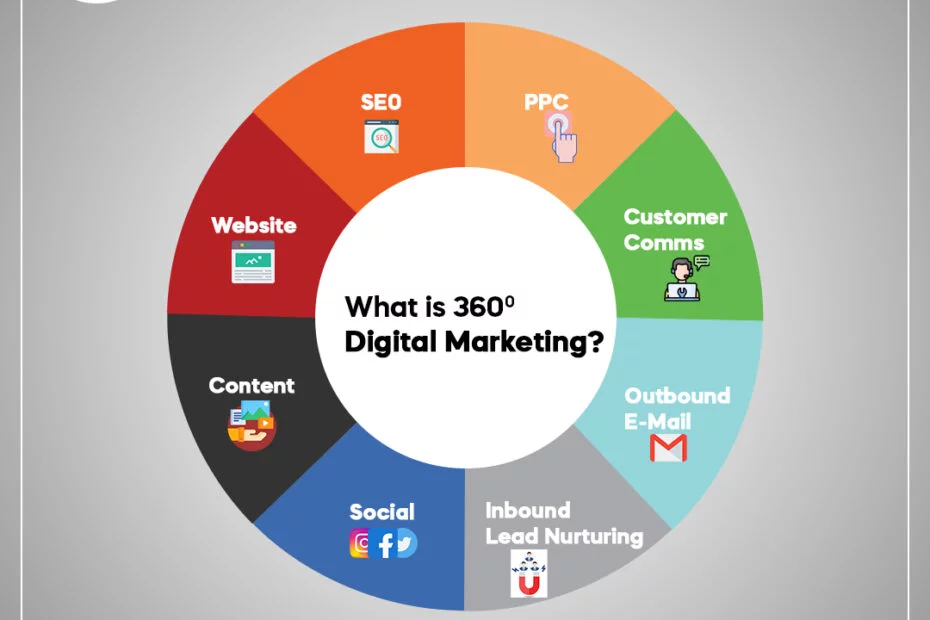The realm of automotive marketing has evolved into a dynamic landscape where the integration of traditional and digital strategies is pivotal. In this exploration, we delve into the concept of 360-degree marketing, where a holistic approach unifies traditional methods with digital innovations. This comprehensive strategy aims to create a seamless brand experience for consumers, leveraging the strengths of both worlds.
The Traditional Touchpoints
Legacy of Print Advertising
Print advertising has long been a cornerstone of automotive marketing, with glossy brochures, magazine ads, and newspaper inserts showcasing the latest models. While digital channels have gained prominence, the tactile and visual appeal of print materials continues to resonate with certain consumer segments, making it a valuable traditional touchpoint.
Television Commercials and Brand Storytelling
Television commercials remain a powerful tool for automotive marketers. The visual and auditory impact of a well-crafted commercial can evoke emotions and build brand recognition. Beyond showcasing features, television allows brands to tell compelling stories, creating a narrative that resonates with viewers and strengthens the brand’s identity.
Digital Domains
The Rise of Social Media Marketing
Social media platforms have become integral to 360-degree marketing strategies. Brands leverage the reach of platforms like Facebook, Instagram, and Twitter to engage with audiences on a personal level. Social media is not just a promotional tool but a space for building communities, fostering conversations, and creating a digital extension of the brand’s identity.
Search Engine Optimization (SEO) for Visibility
In the digital age, a significant portion of automotive research begins online. Implementing robust SEO strategies ensures that a brand’s digital presence is optimized for search engines, making it more likely for potential buyers to discover the brand when conducting online research. SEO is a critical component in the seamless integration of traditional and digital touchpoints.
Bridging the Gap
Consistent Brand Messaging
The key to successful 360-degree marketing lies in consistent brand messaging across all touchpoints. Whether a consumer encounters a brand through a television commercial, a print ad, or a social media post, the messaging should align seamlessly. This consistency builds a cohesive brand image and reinforces key brand attributes.
Unified Customer Experience
360-degree marketing aims to create a unified customer experience, bridging the gap between physical and digital interactions. Whether a customer visits a dealership, explores the website, or engages on social media, the experience should be interconnected, offering a holistic journey that caters to diverse consumer preferences.
Data Integration
Harnessing Data for Personalization
In the digital realm, data is a powerful ally. Integrating data from various touchpoints allows automotive marketers to understand consumer behaviors and preferences comprehensively. This data-driven approach enables personalized marketing strategies, tailoring messages and offers to individual preferences and creating a more meaningful connection with consumers.
Analytics for Informed Decision-Making
360-degree marketing relies on analytics to inform decision-making processes. By analyzing data from traditional and digital channels, marketers gain insights into the effectiveness of campaigns, consumer engagement, and overall brand performance. This data-driven decision-making ensures that marketing strategies are agile and optimized for maximum impact.
Challenges in Integration
Balancing Budget Allocations
One of the challenges in implementing 360-degree marketing is striking the right balance in budget allocations between traditional and digital channels. While the shift towards digital is evident, traditional channels still hold sway in certain demographics. Allocating budgets effectively requires a nuanced understanding of the target audience and their preferred touchpoints.
Ensuring Message Consistency
Maintaining consistent messaging across diverse touchpoints can be challenging. The tone, imagery, and storytelling need to resonate across television, print, social media, and other channels. Achieving this consistency requires a cohesive marketing strategy and effective communication across departments to ensure that the brand speaks with one voice.
Innovations in 360-degree Marketing
Augmented Reality (AR) Integration
Innovations like augmented reality (AR) are adding a new dimension to 360-degree marketing. AR applications allow consumers to visualize vehicles in real-world settings through their smartphones, enhancing the online shopping experience. Integrating AR into traditional channels, such as print ads, brings a digital layer to physical materials, creating an interactive and immersive experience.
Interactive Content in Television Ads
Television commercials are evolving with the integration of interactive content. Viewers can engage with the commercial, explore features, and even schedule test drives directly through their television screens. This blending of traditional storytelling with interactive digital elements enhances consumer engagement and bridges the gap between passive viewing and active participation.
Future Outlook
The Role of Artificial Intelligence (AI)
As 360-degree marketing continues to evolve, the role of artificial intelligence (AI) is becoming more prominent. AI-powered algorithms can analyze vast amounts of data to predict consumer behavior, optimize marketing strategies, and personalize content. From chatbots on websites to AI-driven targeted advertising, the integration of AI is poised to redefine the marketing landscape.
Sustainable Marketing Practices
The future of automotive marketing also involves a commitment to sustainability. Brands are increasingly integrating eco-friendly messaging and practices into their marketing strategies. This includes showcasing electric and hybrid vehicles, promoting sustainable manufacturing processes, and aligning with environmentally conscious consumer values.
The Features of IPTV: A Brief Review(Opens in a new browser tab)
Conclusion
In conclusion, 360-degree marketing represents a holistic approach that integrates traditional and digital touchpoints to create a seamless and interconnected brand experience. From legacy print advertising to the dynamic realm of social media and innovative technologies like AR, successful integration requires a strategic balance and a commitment to consistent messaging. As automotive marketers navigate the challenges and embrace innovations in this ever-evolving landscape, the future of 360-degree marketing holds the promise of a more personalized, engaging, and sustainable connection with consumers. Explore the transformative possibilities of 360-degree marketing and discover innovative strategies to seamlessly integrate traditional and digital touchpoints at https://www.dealersunited.com/, where a wealth of resources and expertise awaits automotive marketers at the forefront of this dynamic evolution.
